The Green Table – A Gem of the West
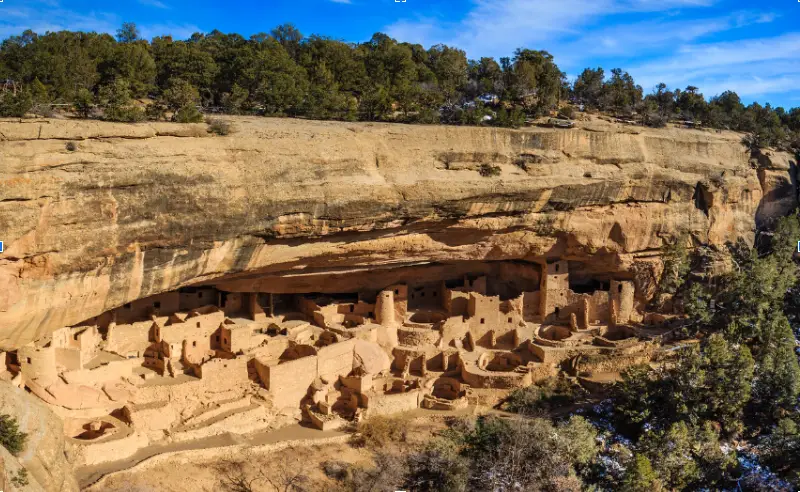
Photo – Michael Ballard
In Spanish, the word for table is: Mesa. Also in Spanish, the word for green is: Verde. The Grand Canyon in Arizona is often considered THE place to visit in the American West. Not as well known, but equally amazing, is Mesa Verde (“Green Table”) in southwest Colorado. It is a national park and it is a gem of a destination.
At Mesa Verde there are jaw-dropping views on every horizon. “Sacred mountains” in the distance were honored by the Ancient Puebloan people. Today, the Ute Mountain Ute Tribe still considers those mountains to be sacred.
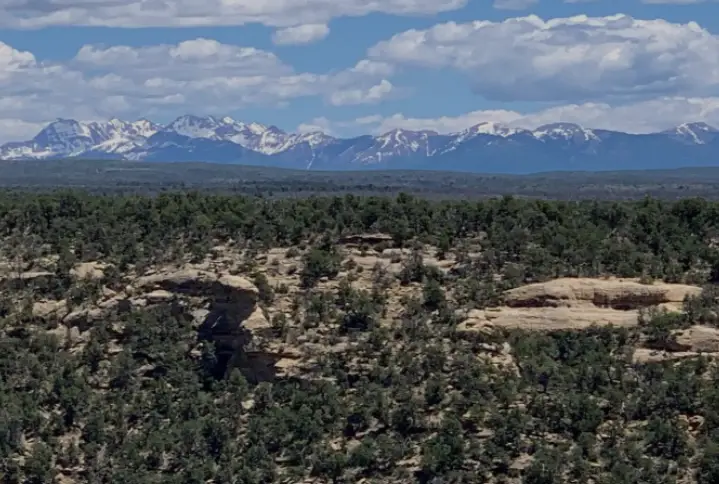
Source: US Geological Survey
Mesa Verde is not as well-known as other national parks in America (Yosemite, Yellowstone, Grand Canyon, Zion, etc.). But it is very much worth a visit. The park is near the “Four Corners” area of the United States. That is where the corners of Arizona, Colorado, New Mexico, and Utah meet.
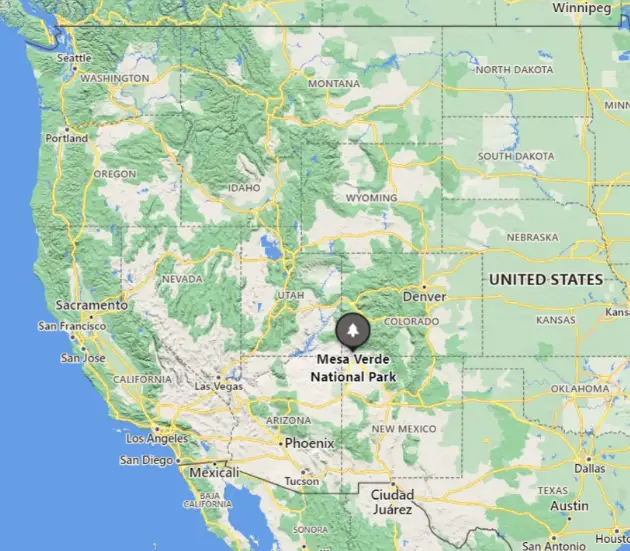
Map: Google
In geologic time, the history of the Mesa Verde area began over 100 million years ago. Inland seas covered the area. As the water in the seas rose and fell, layers of sandstone were left in the region. The climate changed and the land became more dry.
Scientists believe that humans started to live permanently in the area over 7,000 years before the Common Era (BCE). These people hunted small game and gathered berries and other “fruit” from the land.
By 1,000 BCE, scientists have found evidence that the people in the region started to engage in farming. To carry their harvests, the people in the area started to use baskets. From this time period, scientists have also found different household items made from plants and animals. These included sandals, robes, pouches, rope, mats, and blankets.
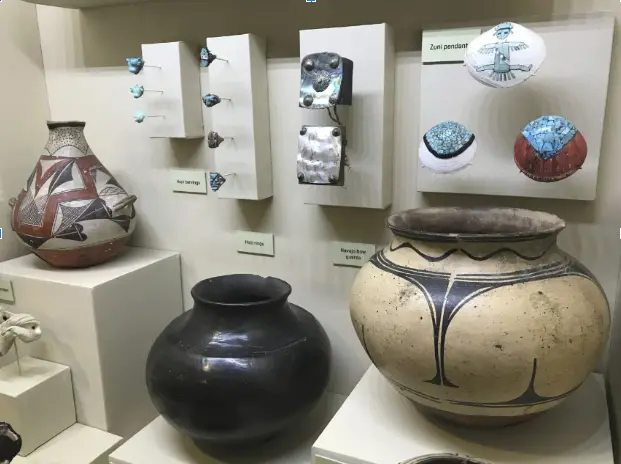
Photo: Brenda Kean
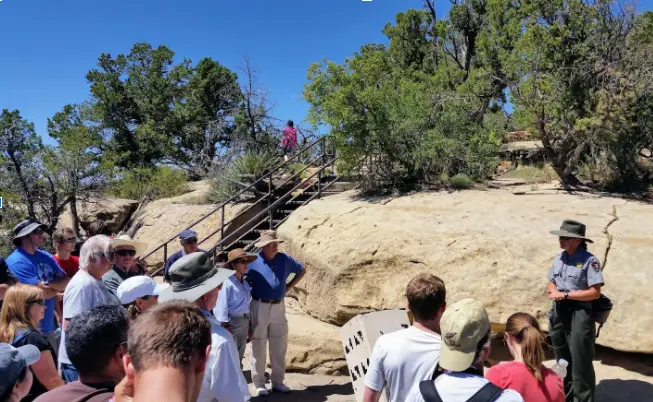
Photo: F R Lambrechtsen
By 500 CE (Common Era), the people that came to be called the Ancestral Puebloans started to live in the Mesa Verde area. Agriculture, the farming of different crops allowed the puebloans to survive and make the area their home. They grew beans, squash, and corn.
The Ancestral Puebloans lived in Mesa Verde until the end of the 13th Century (1270 – 1290 CE). They built and lived in stone houses. Communities were built under cliffs. They did this to protect themselves from wind, rain, the blazing sun, snow, and cold. These cliff dwellings are still visible today. Visitors to Mesa Verde can climb down to these ancient dwellings with the help of maintained trails and park rangers as guides.
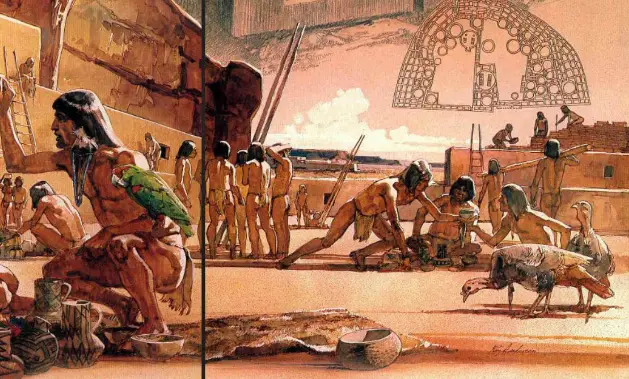
Art: Ray Andersen
If you’re thinking about a visit, the distance from Denver is about 370 miles or about 7 hours driving. From Salt Lake City it is about 360 miles. From Phoenix it is about 420 miles. And from Los Angeles it is about 740 miles or nearly 12 hours driving.
What is there? Stunning views. Vastness. Silence. Sun and sky. The dome of the blue sky as far as the eye can see in every direction. There are dark skies at night for excellent star gazing. There is camping and spaces are available for RVs. There are centuries-old cliff dwellings, hiking trails, and guided tours.
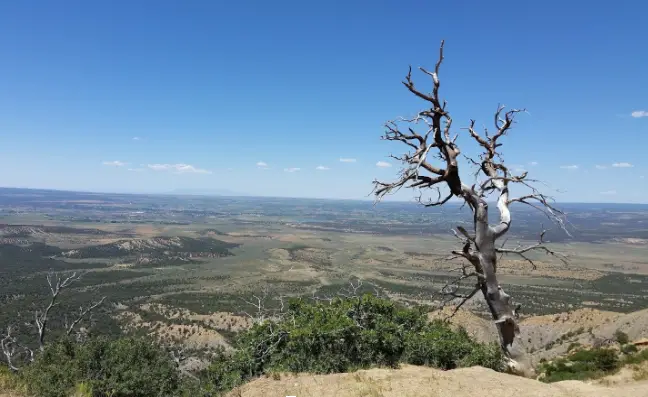
Photo: F R Lambrechtsen
To the south of Mesa Verde is the Navajo Nation. There is a long, winding road up to the top of the park and then photographic opportunities in all directions.
The park service operates a visitor center. There are short educational films, books, and, of course, souvenirs for both young and old.
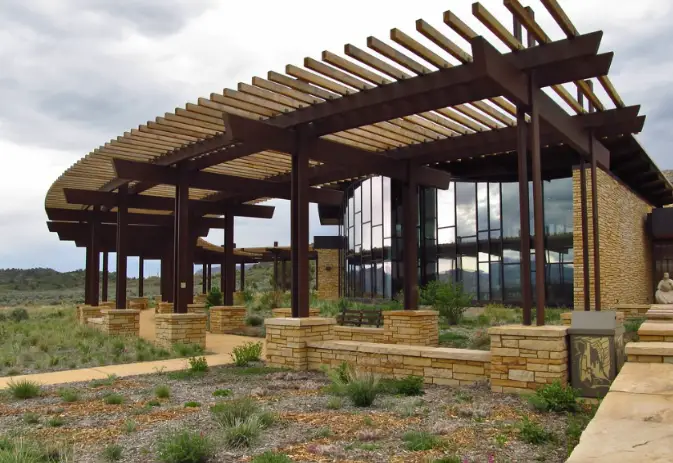
Photo: Jasperdo
I’d heard about Mesa Verde for years. I finally decided to go. My only regret? Not visiting Mesa Verde sooner. The best time to visit Mesa Verde is in the Spring or Fall. This means it won’t be too hot or too cold.
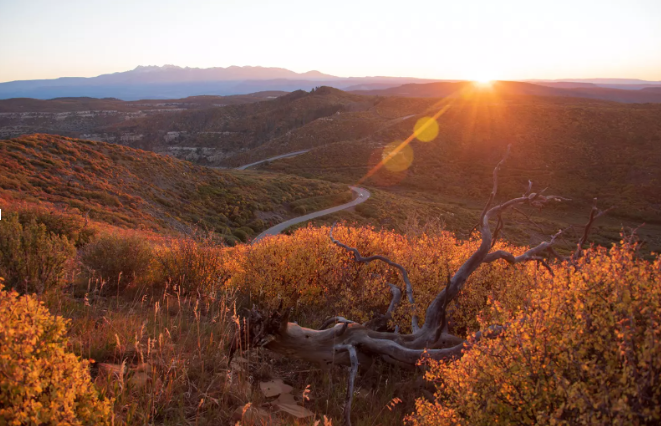
Photo: Spencer Burke/National Park Service

I was able to visit Mesa Verde in the mid 80s and was disappointed that I only had a couple of days to spend there. It is so beautiful, I must have gaped the entire time I was there.
Thanks for the comment, Butch. It’s helpful. Am still working on getting more posts like this one on Mesa Verde published. “Gaped the entire time…” Actually, that’s kind of how I felt too. Expansive and amazing along all points of the compass.